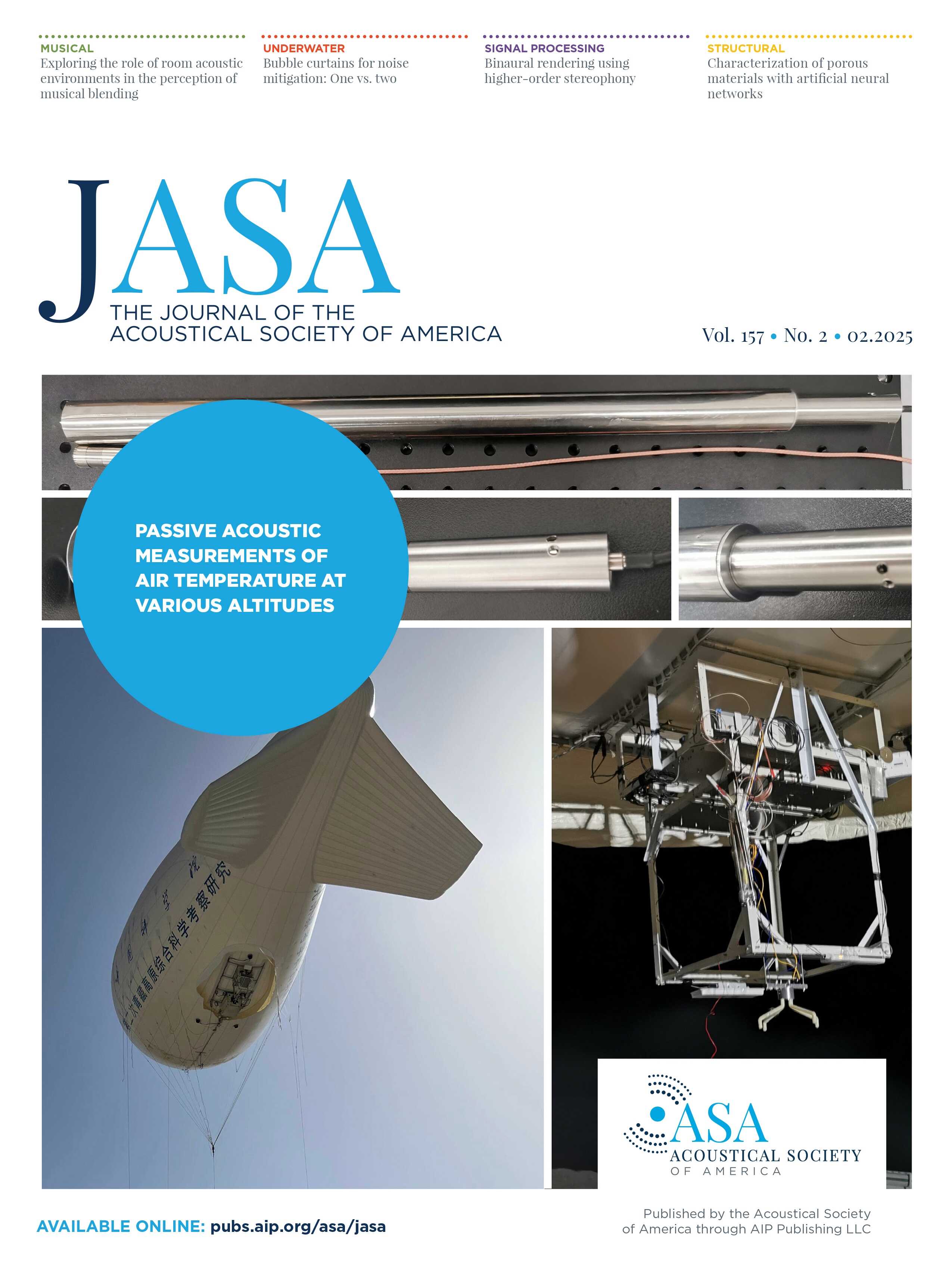Chinese Researchers Develop New Acoustic Thermometry for Rapid Measurement of Air Temperature at High Altitudes
A research team at the Aerospace Information Research Institute (AIR) of the Chinese Academy of Sciences (CAS) has achieved real-time atmospheric temperature measurements at different altitudes of up to 5,200 meters using a new acoustic thermometer mounted on a tethered aerostat. Their findings were published as a cover paper in the Journal of the Acoustical Society of America.
Accurate monitoring of atmospheric temperature at high altitudes is essential for meteorological forecasting, climate change research, and atmospheric dynamics analysis, which can not only improve weather forecasting accuracy but also help scientists understand the formation of extreme weather. Traditional electronic thermometers are susceptible to solar radiation, and their real-time performance is limited by the slow thermal equilibrium caused by thin air at high altitudes. Infrared thermometers, which can measure temperature without contact, are not suitable for measuring gas temperature directly.
Compared with these conventional temperature measurement methods, acoustic thermometry can directly detect atmospheric temperature and has the advantages of high accuracy, wide dynamic range and strong robustness. Existing acoustic temperature measurements are achieved by using a microphone to detect a sound pulse from a speaker, and the distance between the speaker and microphone needs to be precisely controlled for obtaining accurate speed of sound that is related with air temperature. These requirements complicate the technique and reduce its versatility, making it unsuitable for use on aerostat platform.
To address these challenges, the research team developed a passive acoustic temperature measurement method based on the acoustic Fabry-Perot resonant detector (AFPRD). The AFPRD consists of a tubular acoustic waveguide (AWG) and an electret condenser microphone (ECM) with the head plugged into the waveguide. An acoustical FP cavity forms between the ECM diaphragm and the waveguide’s open port, and its resonant modes can be excited by ambient white noise. This innovative approach allows for rapid air temperature measurement by determining the resonant frequencies of different modes rather than relying on a separate sound source. The AFPRD is a low-power, non-contact, and rapid passive acoustic thermometer, and its powerful applicability has been demonstrated in an anechoic room with very weak white noise (-9.2 dB relative to 20 μPa), The measurement error of the AFPRD in the anechoic room is less than 0. 1°C relative to the results measured with a commercial electronic thermometer.
The research team conducted several high-altitude passive acoustic temperature measurements in different places of China, including Kashgar and Hengdian, by mounting the AFPRD on a tethered aerostat. During the ascent, dwelling, and descent of the aerostat, the frequency response curves of the AFPRD were successively measured in an interval of 1.25 s. From each curve, a linear relationship between resonant frequencies and the resonant mode order was established, allowing for the deduction of air temperature at corresponding altitudes.
Test results confirmed that the AFPRD can accurately measure the air temperature variations with altitude, having a difference of no more than 0.5 °C compared to the electronic thermometer used. Experimental measurements at different altitudes and under various climatic conditions verified the high stability and good environmental adaptability of the AFPRD.
Due to the simple structure, high sensitivity, and low power consumption (including wireless data transmission of less than 2.5W), the AFPRD is well suitable for deployment on unmanned aerial vehicles (UAVs) for remote sensing applications. Its potential applications span atmospheric science research, environmental monitoring, high-altitude and near-space detection and more. The AFPRD-based passive acoustic thermometry can also integrate with sound source localization, acoustic wind measurement, and other technologies to establish a multi-parameter high-altitude acoustic monitoring network.
The research was conducted independently by research teams at AIR and was funded by the National Key R&D Program of China and the National Natural Science Foundation of China.

The research is published as a cover paper in the Journal of the Acoustical Society of America. (Image by AIR)



News & Events